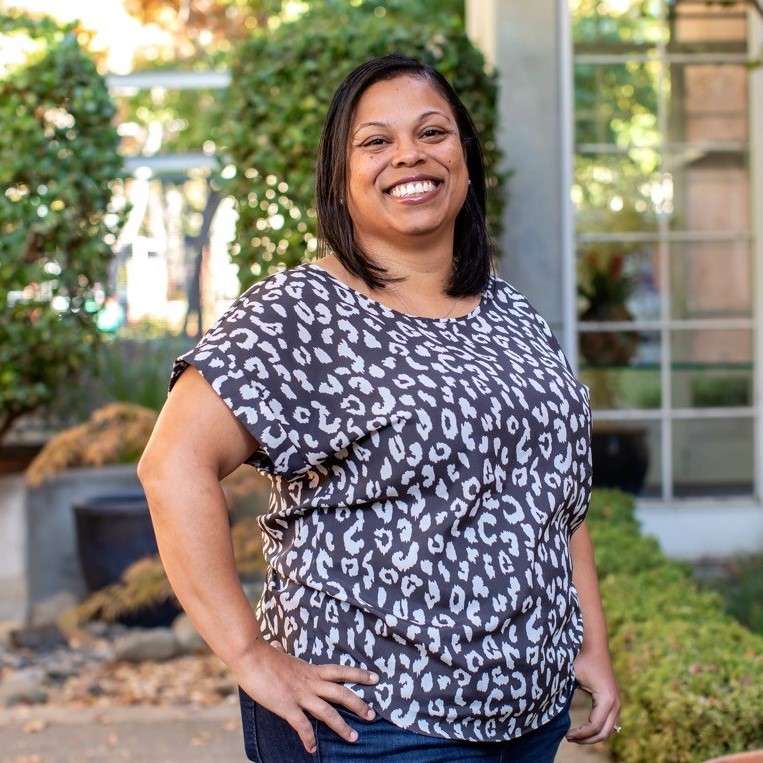
#I Am
Sequoia Carter, AIA
(She/They)
Lionakis
With our initiatives of Equity, Diversity, and Inclusion (EDI), AIACV wanted to get to know Sequoia a little more and her thoughts on EDI.
What inspired you to go into the profession?
I’ve been working as an architectural designer at Lionakis for three years and in the architectural field for 10 years. I was born in Sacramento in the early 1980’s to a white mother and black father and identify as bi-racial, but primarily as a black woman. I’ve lived most my life in Sacramento, however I did spend my junior year of high school in a small town of 3,000 in southeast Kansas when my father moved our family for work. I returned to Sacramento for my senior year of high school, then moved to San Luis Obispo in 2002 to complete my bachelor’s in architecture. I graduated in 2008 right into the great recession, but had a job working for a local architect, so decided to stay living in the area. In 2011, I returned to Sacramento for better work opportunities in my field and have been living here ever since.
My love for drawing and being creative is what originally inspired me to go into the profession along with the suggestion of my school counselor. To be honest, I didn’t really know what it meant to be an architect. My counselor reassured me that there’d be plenty of drawing and that since I did well in math that I should be okay. I had always admired architecture, like the huge skylights in the Arden Fair Mall or the cute bright colored Victorians downtown with the huge porches but had never considered the profession for myself until my counselor suggested it. My idea of an architect at the time was what I had seen on the history channel like those who had built the majestic stained-glass cathedrals or elaborate palaces in Europe. These architects were closer to what we would consider a master builder today, so really, I had a false idea of what an architect was or did. It was only after I started college that I began to understand what a modern-day architect does and how much of a team effort it takes to complete a building today.
Why does representation matter for you?
While in college I started to gain the appreciation for architecture and the way it influences our daily lives. I started to think about the different neighborhoods I grew up in Sacramento compared to the small town my dad still lives in in Kansas and the dorms I was living in on campus. My eyes started to open to how the places we live, work, learn, shop and play affect our overall value and opinions of ourselves in some cases. I’ll admit that it was both eye opening and a bit daunting to reflect on the run-down strip malls, lack of centralized services or dilapidated school buildings I was used to in south Sacramento. However, it was exciting to think about the possibilities that could be achieved through thoughtful design and a passion for empowering people. Looking back, it was the promise of being able to create and express myself that got me interested, but ultimately, it’s the impact on people that keeps me inspired today.
Why is EDI important to you?
Growing up in Sacramento, I didn’t fully understand how fortunate I was to be exposed to so many people of different races and ethnic backgrounds. From what I’ve experienced, Sacramento’s neighborhoods aren’t divided so much by race as they are by your economic situation.
About the #I Am Campaign
To continue with the goals of creating a more equitable, diverse, and inclusive Chapter, the AIACV started an empowering campaign focused on the narratives of people in our profession: #I Am. Visibility and representation are important and the AIACV wants to acknowledge that. Each individual holds different identities that aren’t seen or celebrated in society. Diversity is an action where we all have a part in creating an environment where people feel seen, heard, and included. In this #I Am campaign, we asked our participants to share their stories and get their thoughts on Equity, Diversity, and Inclusion in the profession of architecture. See all the published #I Am’s on the EDI webpage.
If you are interested in sharing your story and thoughts on Equity, Diversity, and Inclusion, feel free to contact us at [email protected].
